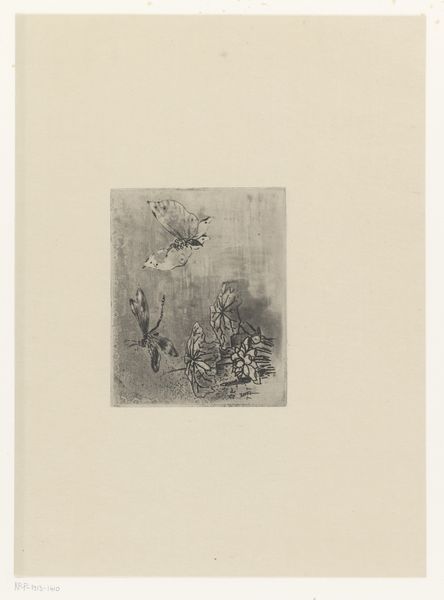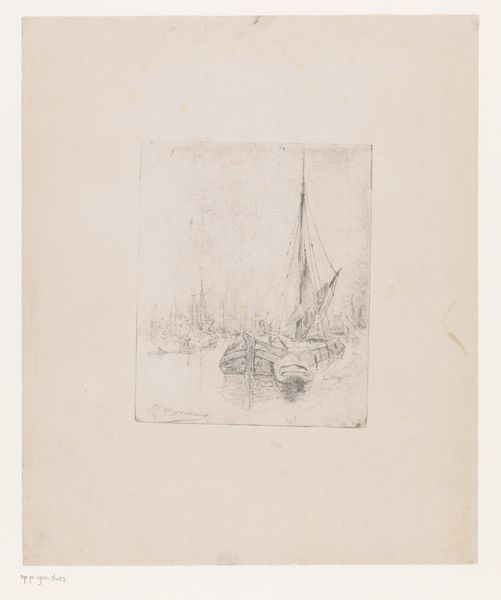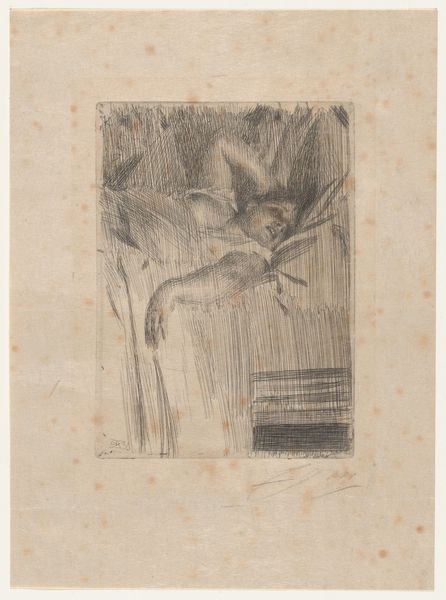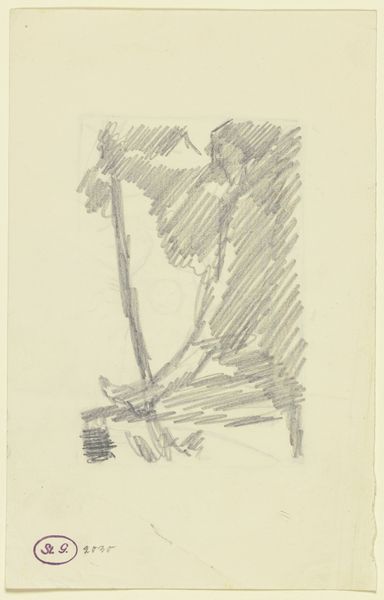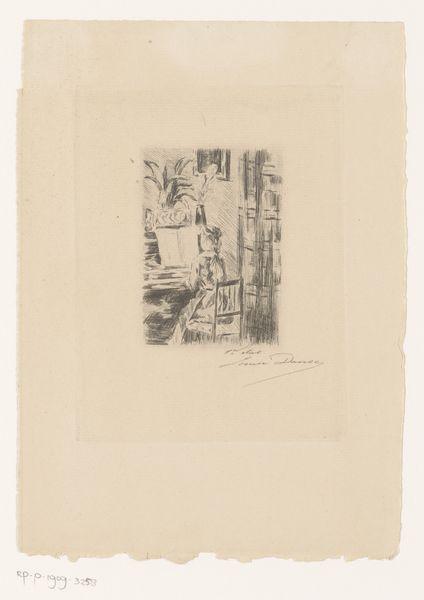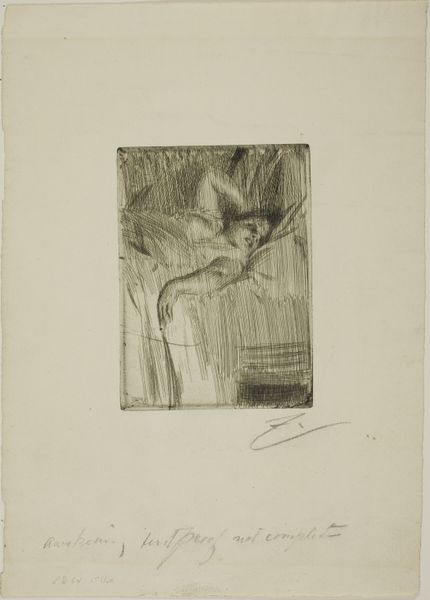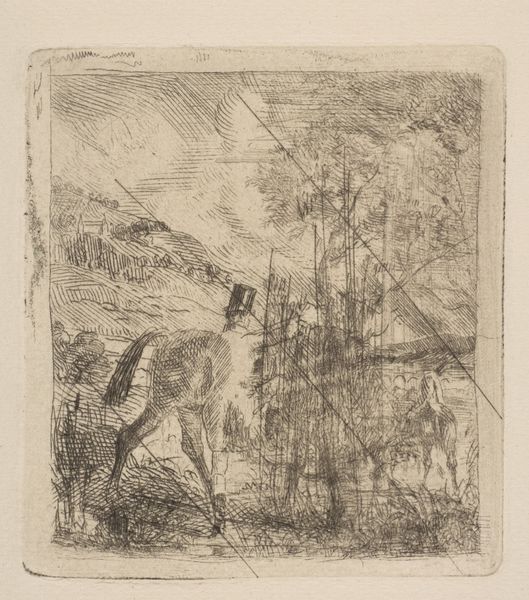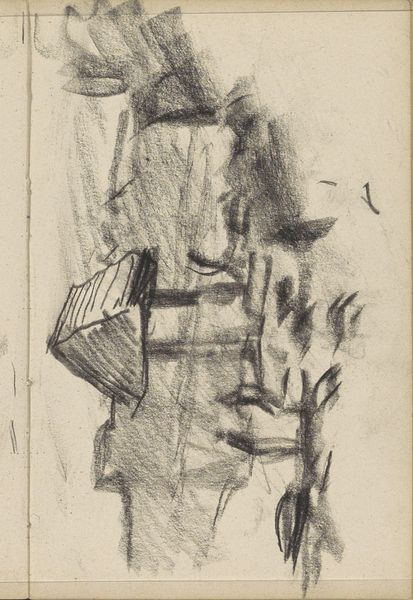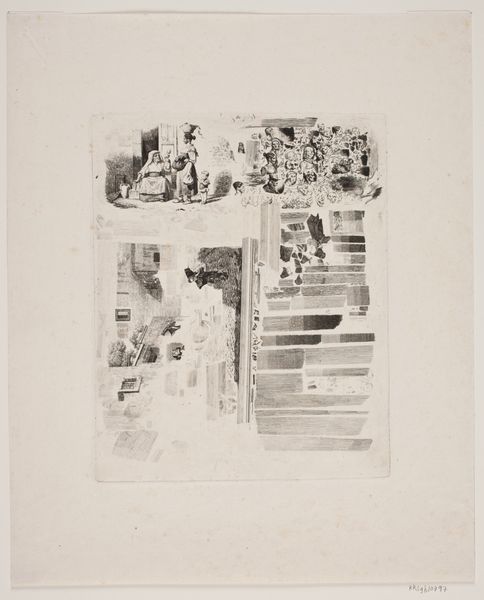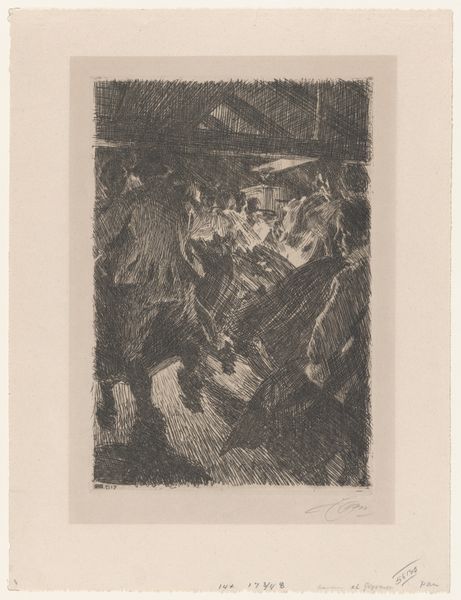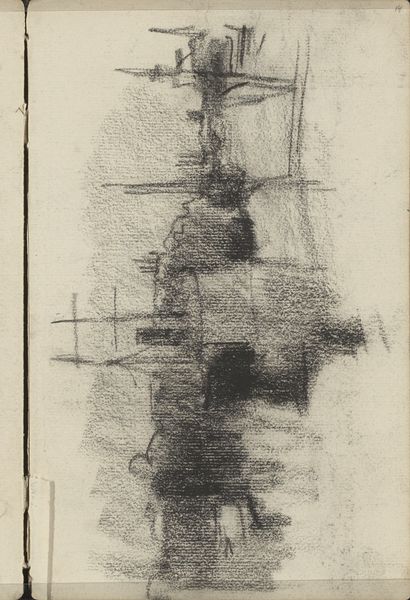
Dimensions: 238 × 202 mm (image); 379 × 283 mm (sheet)
Copyright: Public Domain
Curator: There's a stillness to this lithograph. The almost ghostly grey tones really set a melancholic mood. Editor: Indeed. This is "Adieu," created by Henri de Toulouse-Lautrec in 1895. It is currently housed here at The Art Institute of Chicago, a rather poignant work, particularly knowing his biography. Curator: The back view of the woman... she's distanced, almost turned away from life itself, isn't she? And the dogs, standing so still; the grouping hints at fidelity and loss. Dogs often bear a potent symbolism. Editor: I agree. There’s a compelling stillness. It makes me consider how Lautrec embraced printmaking's possibilities, specifically lithography, to circulate imagery. Consider that so many people beyond the elite could potentially access this visual meditation on departure. This aligns perfectly with broader late 19th-century trends aiming to democratize art access and visual narratives. Curator: Absolutely. Also notice how the composition nods toward the influence of Japanese ukiyo-e prints. See how the figures are deliberately placed asymmetrically, creating depth and shadow, all heightened through the grey wash. But unlike traditional ukiyo-e, Lautrec brings a certain disquiet. Editor: Precisely. It’s not merely decorative; there’s a psychological weight. The "adieu" is unspoken, internalized, yet potent, reflected by that solitary figure facing out to the river scene and sailing boats. Does she anticipate someone's return, or is she forever cut adrift, much like the drifting sailing boats? Curator: The woman almost merges with the indistinct city harbor or dock. I also ponder how the choice of leaving the backdrop undefined and pale focuses our eye on her sense of separation and highlights society’s perception of the solitary female figure in urbanizing society. Editor: A departure rendered as both intensely personal and widely socially relevant; Lautrec's genius, I believe. Thank you for providing me fresh insight on it. Curator: Thank you. The imagery makes me reflect upon the complex intersections of emotion and widespread access in late 19th-century Paris.
Comments
No comments
Be the first to comment and join the conversation on the ultimate creative platform.
